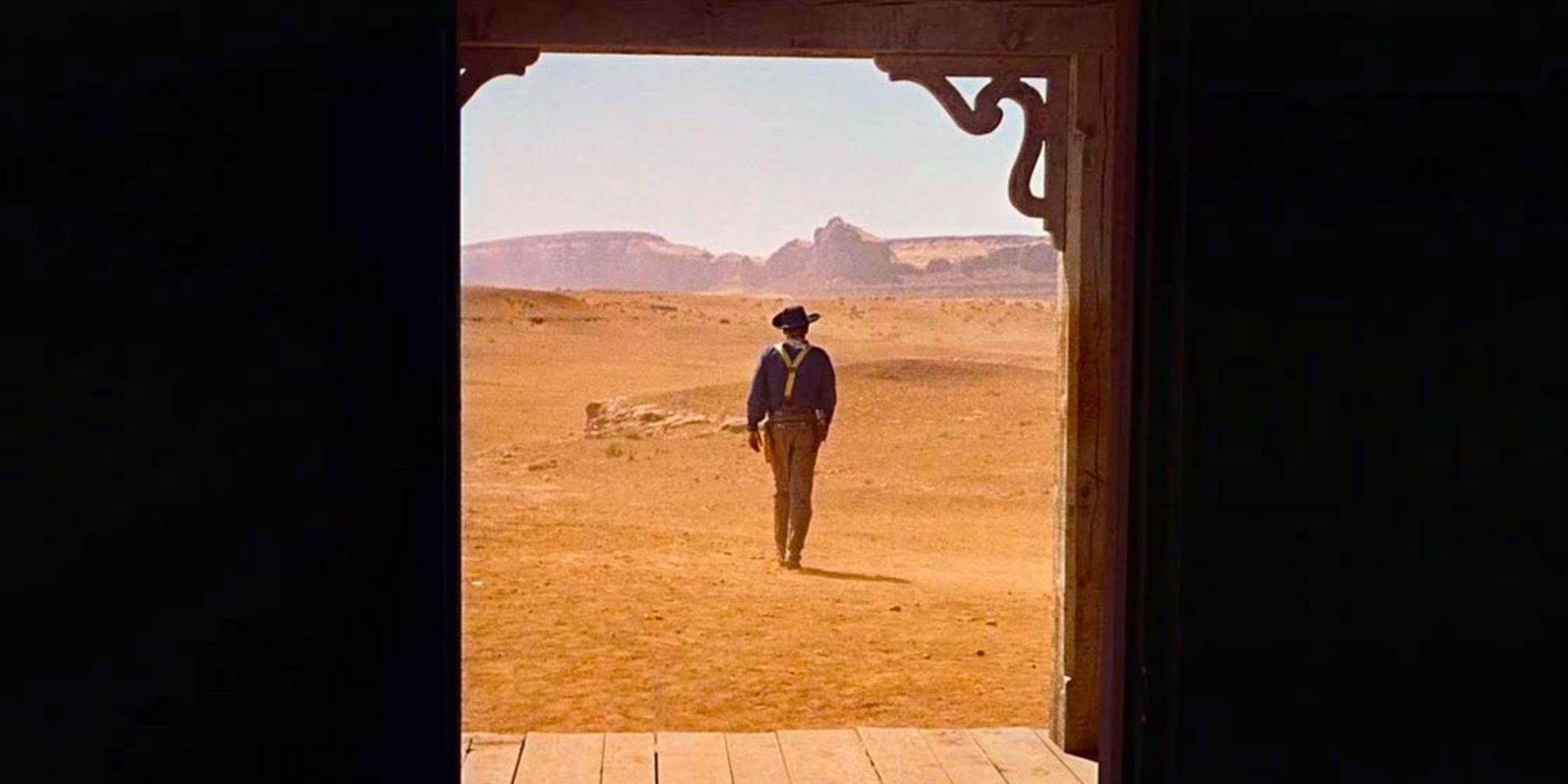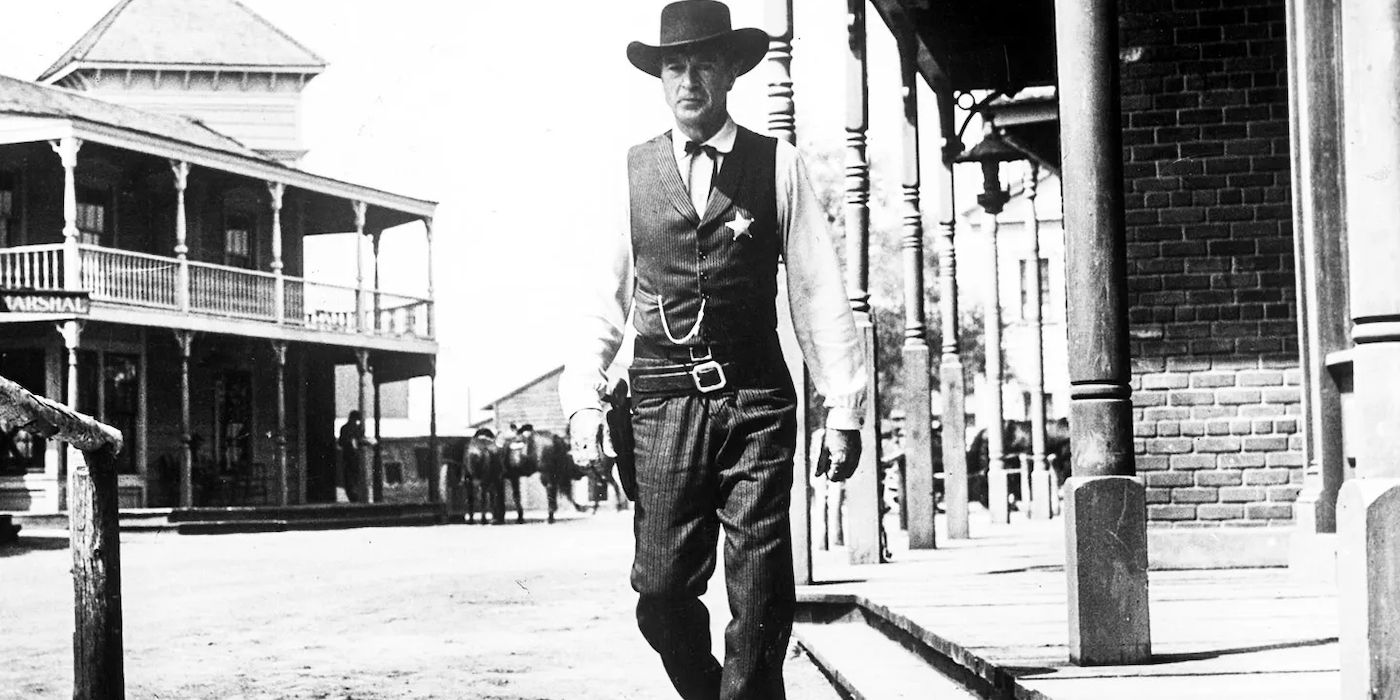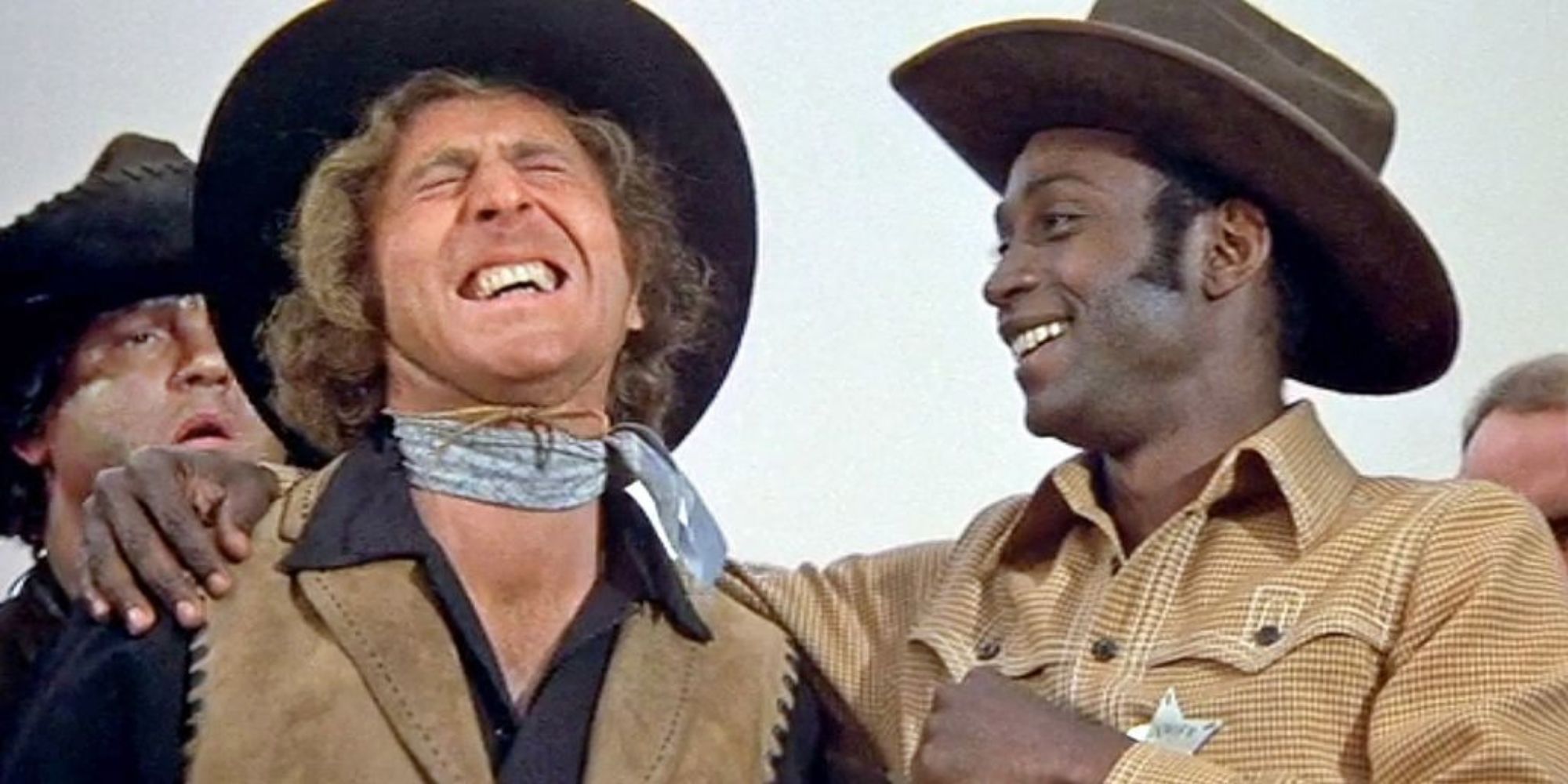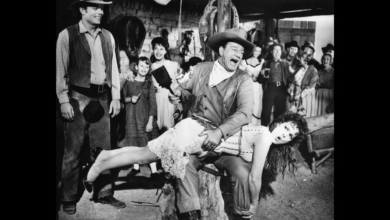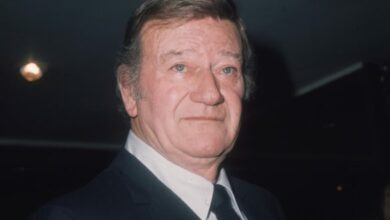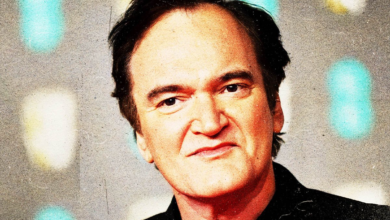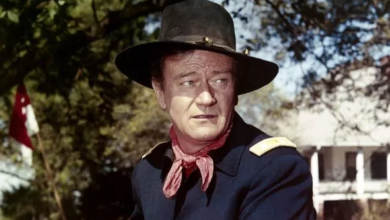John Wayne Turned Down Roles in These Two Very Different Classic Westerns
While John Wayne's filmography is vast, he turned down roles in two treasured classics.
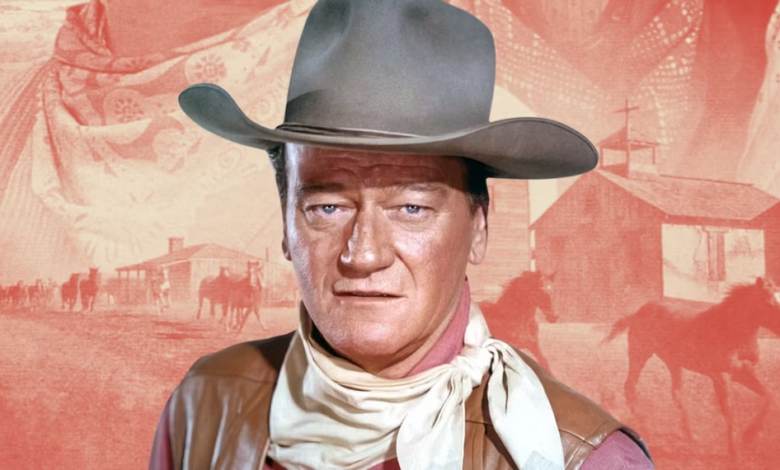
It’s safe to say that John Wayne has a complex legacy, as many long-dead figures in the entertainment world tend to have. He’s a cinematic icon who’s inspired a variety of differing opinions from viewers who watched his movies while he was alive and working, and those who’ve arrived at Camp Wayne decades later. He was born in 1907, first attained a level of super-stardom at the tail end of the 1930s, and then proved to be an incredibly prolific actor throughout the decades leading up to his passing in 1979. He was predominantly known for starring in countless Westerns throughout his career, though didn’t shy away from sometimes appearing in other genres that are generally associated with masculine qualities and characters, like action movies and old-fashioned war films. Being in those kinds of movies made him a star in his day, but perhaps not a figure who’s quite as beloved nowadays as some other legends from Hollywood’s Golden Age.
It’s admittedly easy to cherry-pick and point out the roles he didn’t end up playing that probably would’ve helped bolster his legacy in the long run, and as such, it’s important to note he was in many classics. And sure, might not have had the greatest range, but you could say the same about Keanu Reeves and Clint Eastwood (among others), so that doesn’t necessarily get in the way of a strong screen presence or a certain inimitable quality. But it can honestly be interesting to look at the rare Western roles that John Wayne turned down and unpack the reasons he chose to do so. The two key ones of interest are 1952’s High Noon and 1974’s Blazing Saddles, with it also being necessary to first define Wayne’s typical on-screen image, and also acknowledge the times he did come close to subverting his usual kind of role, most noticeably in the final years of his career.
What Types of Roles Did John Wayne Play?
Before looking at what John Wayne didn’t do, it’s only fair to touch upon what he did. Throughout a career that lasted for close to 50 years, he appeared in close to 200 movies, with many of those being Westerns. Naturally, he came to be regarded as an American icon for being so closely linked to the Old West; a unique period in American history that was also more or less unique to America. There’s every chance his depiction of a cowboy wasn’t perfectly reflective of how real-life cowboys at the time were, but the sort of character he played became representative of the quintessential cowboy to many American viewers throughout the 20th century. To this day, it’s easy to imitate Wayne’s mannerisms, his unique way of speaking, and the way he keeps on saying “pilgrim” at the end of seemingly every sentence (though to be fair, the only time he says it numerous times in one movie is in The Man Who Shot Liberty Valance).
John Wayne did, however, have some outspoken views that may have raised some eyebrows back in the day, but have proven to do much more whenever such comments resurface in the 21st century. He was very outspoken against Communism (like many back in the days of the Cold War), and fiercely patriotic, helping to create the Motion Picture Alliance for the Preservation of American Ideals and the House Un-American Activities Committee, which had a huge impact on Hollywood due to the blacklisting of certain figures in the film industry. Beyond impacting the film industry in this way, many films of his had anti-Communism or conservative values front and center, such as 1952’s Big Jim McLain, which sees Wayne’s character hunting down Communists in Hawaii, and 1968’s infamous The Green Berets, which is one of the few Vietnam War movies to paint the American soldiers fighting in Vietnam as unequivocal heroes (rather than being the “bad guys” or merely victims of the war machine). If younger people are already likely to avoid older movies, then it stands to reason that John Wayne movies may be viewed as extra unappealing. That being said, Wayne was certainly offered roles that might’ve made him appear a little cooler – or at least more daring – to modern-day viewers.
Why Did John Wayne Turn Down the Lead Role in ‘High Noon’?
John Wayne was in a decent number of Westerns that do admittedly hold up well (many from his collaborations with director John Ford), but arguably none hit as hard as High Noon. This movie debatably functions more like a thriller than a traditional Western, with the plot concerning one Marshal who has to stand up to an old enemy who’s out for revenge and is bringing some extra gunslingers along with him. They’re arriving in town on a noon train, with the film beginning in the late morning. In near-real-time, the Marshal is shown trying to round up anyone to help him, but there are no takers, necessitating him to face the antagonists in a showdown at noon, all by himself. Given John Wayne’s on-screen heroism and the way he could often believably come out of physical conflict unscathed, it’s easy to understand why he was offered this central role in the film.
Yet some people have read High Noon as an allegory for Communism-related blacklisting and, in turn, the actions of the House Un-American Activities Committee. Wayne was one of the people who thought as much of the script, and as such, he turned it down because he believed it went against what he supported. John Wayne even said it was “The most un-American thing I’ve ever seen in my whole life.” It might not be surprising, because the film’s writer, Carl Foreman, was himself blacklisted in Hollywood because he was deemed as an uncooperative witness who wouldn’t reveal the names of other people who’d been associated with Communism. A town full of people who are afraid to help could be read as representing those in the U.S. who didn’t stand up to the McCarthyism blacklists, and the hero refusing to back down could be read as representing witnesses like Foreman who didn’t crack under pressure. On the other hand, other people with conservative views may see it as a celebration of their ideals, or as a no-nonsense approach to doing what’s right and by the law; it was even Ronald Reagan’s favorite film. Maybe John Wayne should have approached it with a mind that was a little more open, and not let his anti-Communism feelings blind him. It could well have stood as his greatest Western, had he taken the part.
Why Did John Wayne Turn Down the Role of the Waco Kid in ‘Blazing Saddles’?
High Noon was radical for its time, but might not look that way when viewed 70+ years later. Blazing Saddles, on the other hand, still packs a punch almost 50 years on from release, retaining its power as one of the funniest, most daring, and most subversive Westerns of all time. It’s a satirical film that aims to show the Old West as prejudicial and backward and does so with hilarious irrelevancy, featuring a narrative that sees a Black man appointed sheriff of a particularly racist town. Not only does it poke fun at the attitudes people likely had back in those times, but it also shines a light on those values that persisted into classic Westerns; films that don’t so much swing and miss when it comes to landing within the bounds of political correctness and more so just don’t bother to swing in the first place. And yes, Blazing Saddles can be read as politically incorrect, but it aims its comedy in the right direction, and protagonist Sheriff Bart always comes out on top morally (and is never ridiculed; it’s the racist townspeople viewers are encouraged to laugh at).
The other character who’s not the butt of many jokes is the Waco Kid, who quickly becomes friends with the new sheriff and serves as a sidekick of sorts. This was the role that writer/director Mel Brooks offered to John Wayne, though he turned it down, seeing as the language and content went against the rest of his filmography. Unlike the situation with High Noon, though, Wayne viewed the Blazing Saddles script more favorably, and told Brooks he’d be “first in line to see it.” That’s something at least, but it would have been great if he’d taken the part. It would’ve served as one of Wayne’s final movies and would be talked about to this day for feeling so different from everything else he’d done. It might’ve been interesting to have seen John Wayne try his hand at such an over-the-top, laugh-a-minute comedy, and it’s something people would likely have respected him for doing.
The Roles That Did (Slightly) Challenge John Wayne’s Image
There are interesting movies outside the Western genre that John Wayne almost appeared in. He came close to appearing in the classic action/war film, The Dirty Dozen, and even more intriguingly, almost worked with Stanley Kubrick on Dr. Strangelove. Both of those would’ve been career highlights, but beyond acknowledging his well-known Westerns made around the middle of the century, it’s also worth mentioning that John Wayne’s typically masculine screen presence and overall range were challenged more often in the final years of his career. This was largely due to the actor being in his 60s, and perhaps thanks to the fact that he had a slightly different outlook on life, too.
For instance, audiences can be thankful that The Cowboys didn’t suffer a similar fate to High Noon and Blazing Saddles, in that John Wayne agreed to appear in it, despite it being darker than his usual cinematic outings and having a director who he didn’t agree with when it came to politics. The Cowboys is a fairly brutal film, and Wayne’s character is surprisingly vulnerable. Anyone who’s seen it will know why it stands out among most of his earlier films. The Shootist (his last film) also covers similar ground thematically and provides a bittersweet sendoff for the actor while acknowledging he’s not as young or hard-hitting as he used to be. So inevitably, Wayne wasn’t incapable of appearing in subversive roles and did challenge himself more as he got older. However, it hurts a little to think about what might’ve been when it comes to some of the films he did turn down, and also wonder about how modern-day audiences might see him now, had he been just a touch more adventurous with the sorts of roles he took on.

